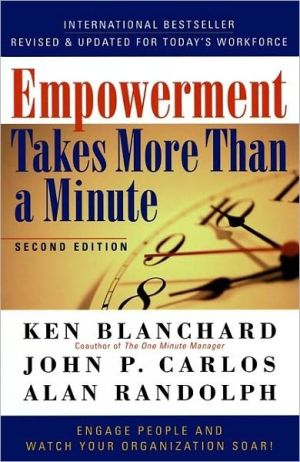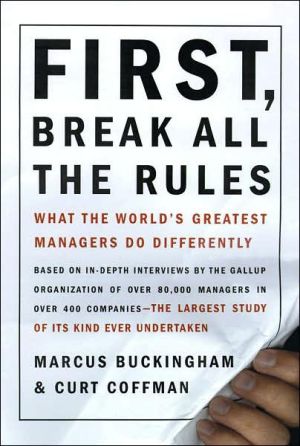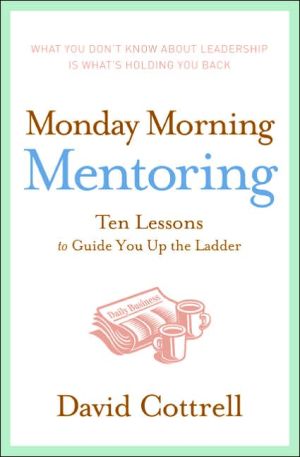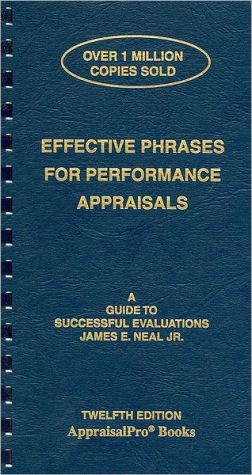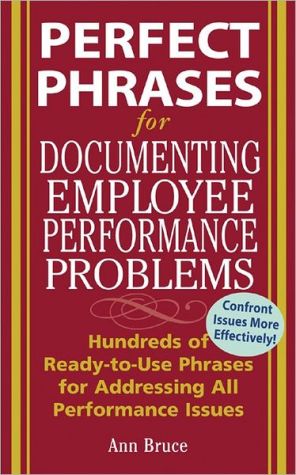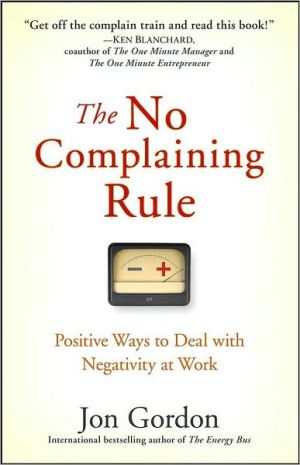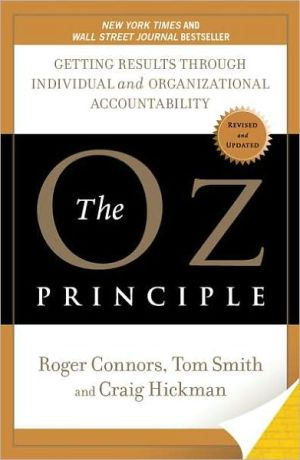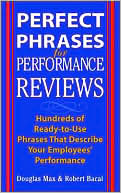Empowerment Takes More than a Minute 2 Ed
"Empowerment Takes More Than a Minute" explains that empowerment is not "giving power to people." Rather, it is "releasing the knowledge, experience, and motivation they already have."\ \ \ Drawing on ten years of research and consultation with a wide variety of leading companies, the coauthor of the One Minute Manager series joins forces with a motivational speaker and an internationally known management educator and consultant to identify three keys to making...
Search in google:
Revised and updated, this book outlines a business approach that engages the skills, experience, knowledge, and motivation of all employees.
EMPOWERMENT TAKES MORE THAN A MINUTE\ \ By Ken Blanchard John P. Carlos Alan Randolph \ Berrett-Koehler Publishers, Inc.\ Copyright © 2001 Blanchard Family Partnership, John Carlos, and W. Alan Randolph\ All right reserved.\ ISBN: 978-1-60509-339-0 \ \ \ Chapter One\ THE CHALLENGE\ THE RAIN beat down steadily. Occasionally the wind threw great splashes against the executive office windows. The sound brought a smile to Michael Hobbs's face. It made him reflect on the beating he was taking as president and CEO of a midsize, once-successful, home products company.\ Michael had taken over leadership a little over a year ago, and he had instinctively done his usual thing—seize the checkbook and centralize all decision making. He had developed quite a reputation since his MBA program as a dynamic, high-energy manager. His belief was that lack of leadership at the top was usually the cause of a company's problems. As a hands-on manager, it didn't take him long to address that void. He was decisive and in charge, but for some reason his approach was not working this time.\ Another sheet of rain blasted the office windows, rousing Michael from his trance. He looked up at the sign on his desk given to him by the consultant his board had recommended he should hire. The sign was really starting to bother him, but he didn't have the nerve to take it down. It read:\ He recalled the consultant putting the sign there after giving Michael and his management team the results of a study conducted on their industry, their competition, and the company itself. It reminded Michael of a painfully obvious fact that the study had confirmed: Management's thinking is the first thing that has to change.\ The board had insisted that Michael use this consultant, because they felt the home products industry was changing so rapidly that he could no longer figure everything out alone. They felt he needed help. Michael vehemently disagreed, yet he had to admit that the consultant's study did bring up some interesting points.\ In no uncertain terms, the study warned that the company would be crushed by its competition unless all thinking, structure, processes, and action conformed to four critical organizational attributes. The company needed to be better at being:\ 1. Customer and quality driven\ 2. Revenue- and cost-effective\ 3. Fast and flexible in responding to market changes\ 4. Continually innovating\ Now, as he had so many times before, Michael mentally reviewed each item on that list.\ 1. CUSTOMER AND QUALITY DRIVEN\ No one needed to convince Michael that in today's market, success begins with customers. But somehow, many companies had lost sight of the need to focus on quality and dependability, as perceived by the customers. The do-it-yourself explosion had made him and others feel that they only had to get the new products out quickly to keep pace with competition (or, better yet, stay ahead). But now quality was again being thrust into the equation. Change had come with blinding speed. With the sophistication of today's customers and the variety of products available on the global market, the study insisted that any organization not responsive to customers' wants and needs was doomed to be second-rate or soon out of business! And he did not want his company to be one of those out of business soon.\ 2. REVENUE- AND COST-EFFECTIVE\ The importance of this attribute didn't surprise Michael, either. He had always been one to focus on controlling costs. Too many companies had begun to believe during the technology revolution that all that mattered was top-line revenue. How wrong they had been. Cost increases, together with fierce pricing battles, had forced companies to shave margins to a fraction of what they had been. And it was easy to let margins slip into negative territory. Now was clearly a time when companies had to build revenue streams in ways that were also cost-effective.\ 3. FAST AND FLEXIBLE IN RESPONDING TO MARKET CHANGES\ The third attribute reminded Michael of just how difficult it had become to manage effectively in a global economy. Markets could shift so quickly with customer demands being driven from all corners of the world. Competitors could appear from any direction with technological ease. And if your company did not respond, revenue and market share could drop drastically.\ The study pointed out that rapidly changing customer needs and wants made cumbersome decision making and implementation processes deadly for a company. In the time it took to collect information for his management team to make decisions and then move the decisions through the company hierarchy, the customer would be gone. On the other hand, if he let people throughout the organization act freely, chaos would follow and costs would go through the roof. His concern reflected a real dilemma for the company.\ Customers wanted their contacts in the company—front-line employees—to make decisions, solve problems, and take action right on the spot. Clearly, quicker, on-the-spot decisions were better, and Michael was reluctantly beginning to accept that point. But he wondered how he as CEO could keep control of such a rapidly changing organization. He was afraid his people would make too many mistakes that would cost the company too much money.\ 4. CONTINUALLY INNOVATING\ Everywhere Michael turned, he heard that lifelong learning had to become a norm in his company. Everyone in the company would have to embrace the vision of a corporation that would be better today than it was yesterday and better tomorrow than today. Michael knew that would be a difficult task—creating an organization that would steadily and consistently outdo itself. But even more difficult would be focusing the power of people to innovate continually. He knew that without innovation a company is dead today!\ Michael was growing more anxious by the moment. He realized the consultant's recommendations were right. He knew that if the company were to survive, he would have to create an organization that was simultaneously customer and quality driven, revenue- and cost-effective, fast and flexible, and continually innovating. But how?\ He kept hearing that he needed to find ways to engage people throughout the company. They had to become owners and entrepreneurs in spirit. He had to release all the untapped creative energy of the people in the company and yet not lose control of the company. People had to be expected to take responsibility for their actions and decisions, while making full use of their skills and abilities. They had to be engaged in addressing all four of these attributes for success.\ Empowerment, thought Michael. That's what some people say we need, but he felt he had already tried to empower people with little success. Six months ago he had reduced some of the layers of management in the company and put out a statement that everyone was authorized to make decisions that would help them better serve customers, control costs, increase revenues, and keep the company innovating. He had told his management team to follow up with this change in decision making.\ Six months, Michael mused, yet nothing seems any different. As he looked out at the driving rain, he wondered, Where is the spirit of responsibility at work? Where is all that desire to make a contribution? The sad truth was that throughout the organization people were acting no differently than they had when the company was a multilayered bureaucracy. Few people seemed willing to step up to the plate and take on the challenge. And where some people had taken action, they had often created problems due to their lack of understanding of the implications of their actions. They had had to be pulled back a little. A pall of reluctance hung over the workplace.\ As Michael took the pulse of the company—meeting with employee groups, asking questions of the front line—he had yet to see people acting empowered. In fact, they went about their business in the same manner as when the company was dominated by its deadly bureaucratic mind-set. With all the talk about the need for empowerment, Michael thought the shift would happen spontaneously once he authorized people to make more decisions on their own. Obviously, that was not the case.\ Everywhere Michael looked, employees' faces were masks of denial. He sensed that to them, the word empowerment was just that, a word—the E word. It was driving him crazy! And it was not helping his company, either.\ He wondered if empowerment was just another buzzword. Or was there something about it that he just did not understand? On the surface it seemed people would want to use their talents and have the freedom to make decisions. They said they wanted to be more involved! So what was wrong? He had to find out before the company sank any deeper.\ Chapter Two\ THE EMPOWERING MANAGER\ MICHAEL happened to notice an article sitting on his desk. The title caught his attention: "Empowerment Takes More Than a Minute." In spite of his recent skepticism, this title intrigued him and he started reading the article. The author insisted that empowerment works, but it takes courage and time to get there. The article stated that you can't tell people to act empowered and expect them to just do it—exactly what he had done six months ago. If they have little or no past experience or involvement in decision making, they won't know what to do. They may talk like they want to make more decisions about their work, but they will not be comfortable with the downside risk of responsibility.\ Citing an example of one company's success in empowering its people, the article went on to rave about the turnaround of a communications hardware company that had been caught napping by the advent of the exploding communications technology demands. The manager, some guy named Sandy Fitzwilliam, was credited with having an incredibly motivated staff who acted as if they owned the company. In fact, the article referred to Fitzwilliam as "the Empowering Manager."\ Maybe I ought to talk to him, thought Michael. Most of the consultants I've met over the years have never actually managed anything themselves. Maybe I can talk with this Fitzwilliam guy in practical terms.\ It seemed like a good idea, yet Michael was reluctant as he dialed information for Fitzwilliam's number. He always hated to admit he needed help. It drove his wife crazy that he would never stop to get directions when they were lost. He would drive around stubbornly trying to figure out how to get to their destination on his own. Only as a last resort would he stop and ask for help.\ I guess this is one of those "last resort" times, Michael thought. My board is not going to wait forever while I figure out how to make this company profitable again.\ With that thought as his motivation, Michael dialed the Empowering Manager's number. After two rings, he was greeted by a woman's voice saying, "Hello!"\ "I'd like to speak with Sandy Fitzwilliam," Michael requested.\ "Speaking," was the quick reply.\ Michael was caught completely off guard. It never even entered his mind that Fitzwilliam could be a woman. Sandy Fitzwilliam broke the silence by asking, "Hello, are you still there?"\ "Yes. Yes," stammered Michael.\ "What can I do for you?" she asked politely.\ Michael's mind was racing a mile a minute. Even though he was uncomfortable asking for help and desperately wanted to hang up, he found himself reluctantly explaining his situation and his need for some advice.\ "We've streamlined our company so people can take more initiative and respond to customers more quickly. But people are still sending most decisions back up the hierarchical ladder. I've talked a lot about empowerment, and I can't understand why...."\ "Excuse me, Mr., uh...."\ "Oh, I'm sorry—my name is Michael Hobbs."\ "Can you be more specific about what exactly is the problem?" the Empowering Manager continued. Michael gulped and thought for a moment. Then he said simply, "People won't run with the ball."\ "Let me ask you something," she began. "Have you ever arrived at a retail store one minute after closing time, only to find the door locked? You needed something badly, and you saw people inside, so you knocked on the door—and nobody even looked up."\ "Yes. That happened to me just last week!" Michael exclaimed.\ "Whose fault did you think it was? Who did you blame as you drove away?"\ "The employees, of course!" Michael answered. "I bet the manager wasn't even there, and the workers were watching the clock, anxious to close shop. They probably weren't even thinking about me. They just wanted to get the heck out of there."\ "Wrong!" Fitzwilliam chimed.\ "What do you mean, wrong?" Michael asked defensively.\ "Of course the employees were anxious to leave. But you're wrong about who was to blame. The fault was the owner's. Whoever the owner is, he or she did nothing to make the people who work there feel like they own the business. Otherwise, they would have opened the door."\ Michael thought it over in silence.\ "Let me ask you another question," the Empowering Manager went on. "If people were given the option, do you think they'd choose to be magnificent or ordinary at work?"\ "Magnificent."\ "Do you really believe that? Or are you just saying it because you think you should believe it?"\ "Why would you ask that?" Michael inquired.\ "Because I need to know about your real, honest-to-goodness, core beliefs. If you don't have a basic faith in people, it's time for us to hang up. Empowerment depends on a strong belief and trust in your people."\ Michael was taken aback. Wow, he thought, this woman doesn't beat around the bush at all.\ He answered reluctantly, "Well, if you must know, I don't have that much faith in people. It's partly because of the hierarchical thinking I grew up with and because this thinking has been reinforced in my MBA program and my work experience. When I think about it, it makes sense that people would rather do their best at their jobs, given the choice. But that's when I stop to think about it. My gut instinct is that people are not that responsible. They may like freedom to do what they want on the job, but they do not want to be held accountable when things go wrong."\ "I appreciate your honesty," the Empowering Manager replied. "Recognizing that the world might pass you by if you don't change is half the battle. This is particularly true when you understand what empowerment is and what it is not."\ "That would certainly help," said Michael. "I've never actually heard a good definition. To me it has always seemed that empowerment is giving people the power to make decisions, but somehow that just has not worked in our company."\ "That's what a lot of people think, but true empowerment is not giving people power," she explained. "People already have plenty of power—in the wealth of their knowledge, experience, and motivation—to do their jobs magnificently. We define empowerment as 'letting this people power out and focusing it on company issues and outcomes.' But you see," she added in a more subdued tone, "I've learned this the hard way by making many mistakes along the road to empowerment.\ "Real empowerment has at its core a sense of ownership," she continued. "And it starts with the belief system of top management. Too many leaders still need to get over the notion that their people head off to work every morning asking themselves how they can get by with doing as little as possible today."\ "When you put it that way, it sounds terrible," said Michael. "Are there that many leaders who have so little trust?"\ "I can only go by their behavior," said the Empowering Manager, "and by the results they get from their employees. It's not that people in organizations are unable to be their best—they're afraid to be their best. Most organizations are set up to catch people doing things wrong rather than to encourage and reward them for doing things right."\ Michael thought about that. "You know," he said, "I agree. I've seen organizations like that." Then he paused, sunk deep into thought, and finally said, "That's part of the problem at my company." Again he paused, then added, "If we are to survive, our company has to be a place where people are proud to show what they can do and not afraid to be their best! I'm just not convinced that empowerment can get us there."\ (Continues...)\ \ \ \ \ Excerpted from EMPOWERMENT TAKES MORE THAN A MINUTE by Ken Blanchard John P. Carlos Alan Randolph Copyright © 2001 by Blanchard Family Partnership, John Carlos, and W. Alan Randolph. Excerpted by permission of Berrett-Koehler Publishers, Inc.. All rights reserved. No part of this excerpt may be reproduced or reprinted without permission in writing from the publisher.\ Excerpts are provided by Dial-A-Book Inc. solely for the personal use of visitors to this web site. \ \
Contents\ Preface....................ix\ Introduction to the Second Edition....................xiii\ The Challenge....................1\ The Empowering Manager....................9\ The Land of Empowerment....................17\ The First Key: Share Accurate Information with Everyone....................25\ The Second Key: Create Autonomy through Boundaries....................37\ The Third Key: Replace Hierarchical Thinking with Self-managed Teams....................57\ The Three Keys in Dynamic Interaction....................69\ Give Everyone the Information to Act....................73\ Boundaries Are Guidelines for Action....................85\ Allow Teams to Become Self-managed....................93\ Persist in Your Belief in Empowerment....................107\ The Empowerment Game Plan....................111\ Epilogue....................115\ Acknowledgments....................121\ About the Authors....................127\ Services Available....................133
